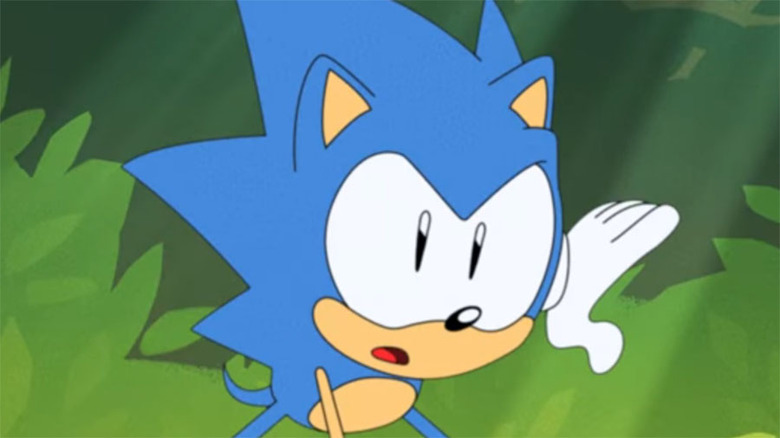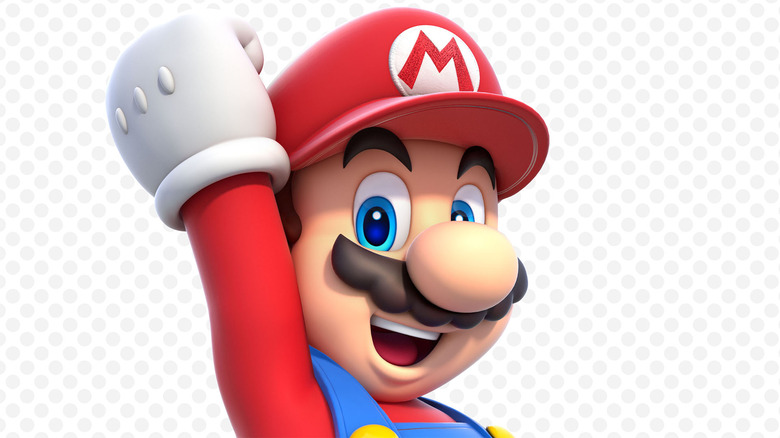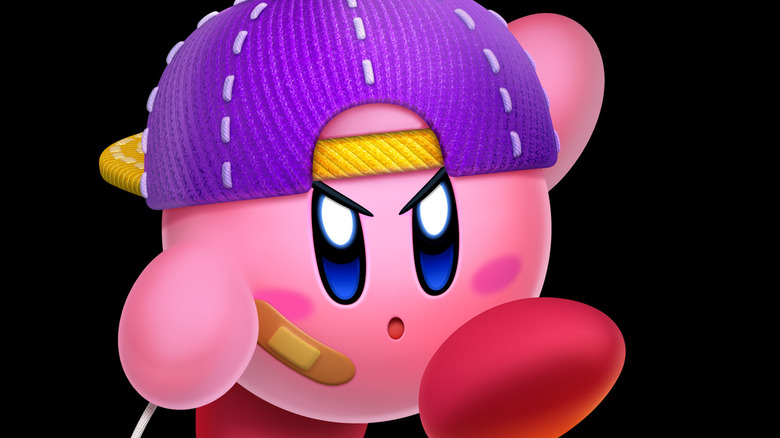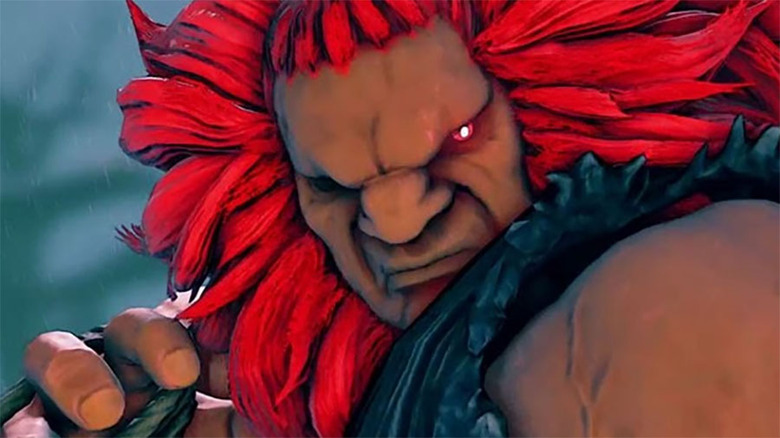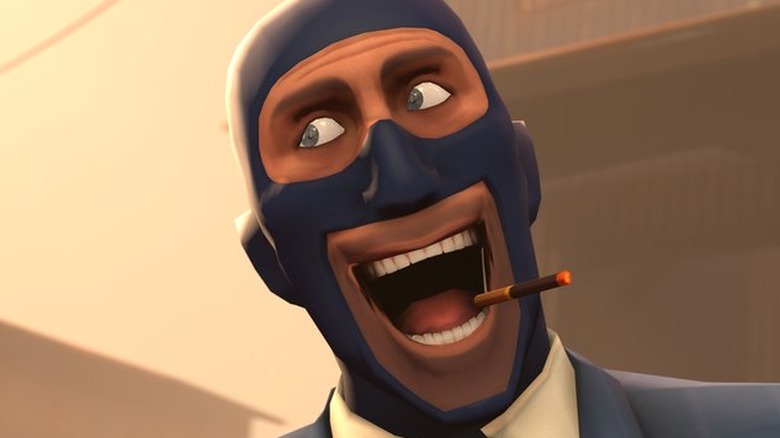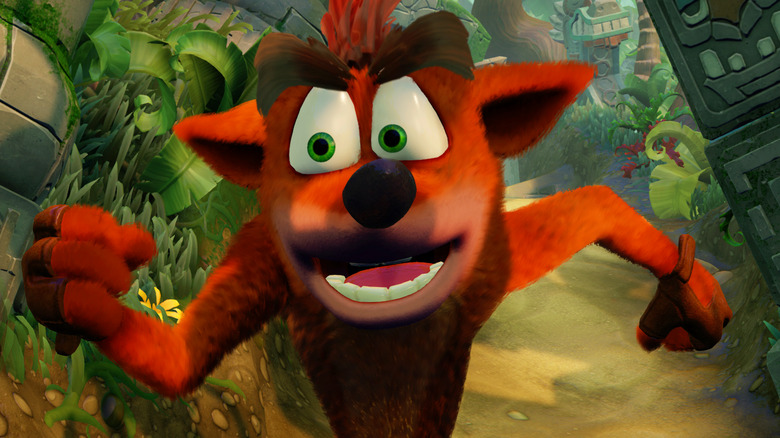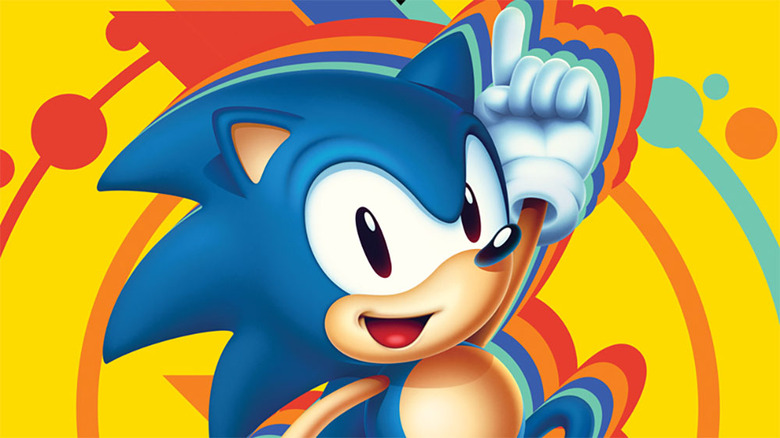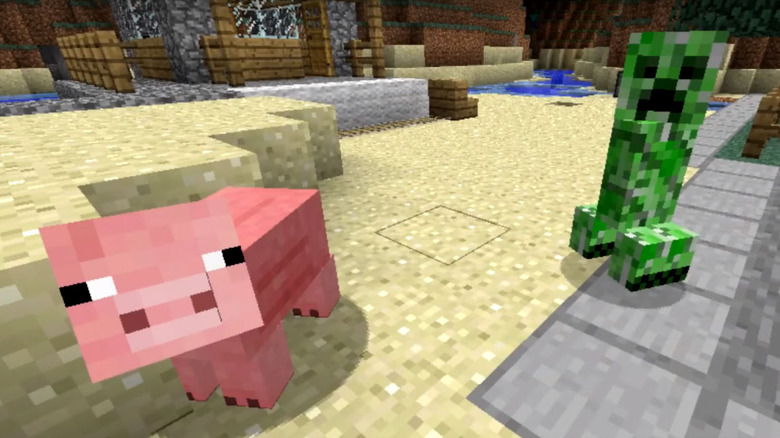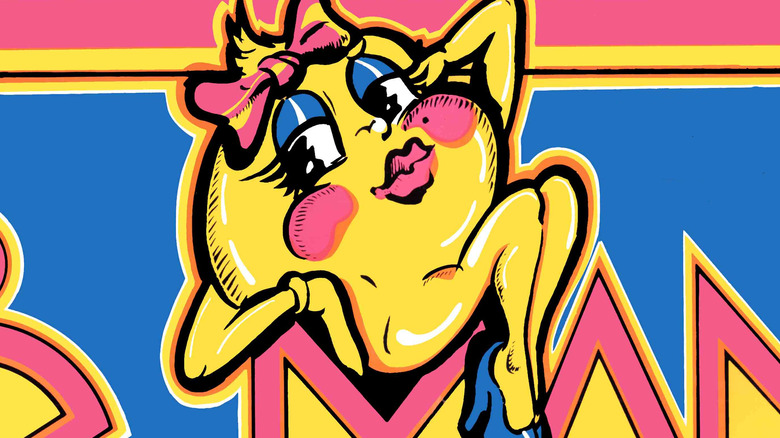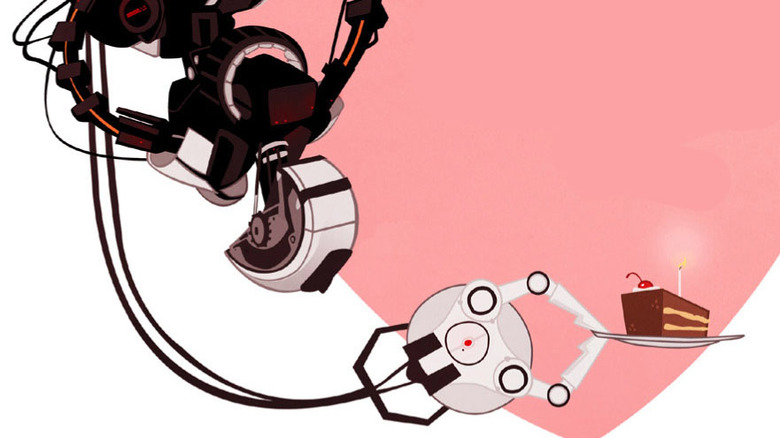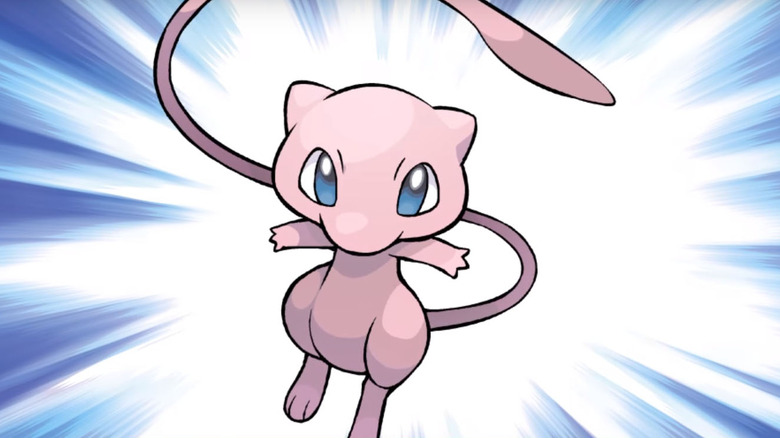Iconic Game Characters That Almost Didn't Happen
Despite appearances, video games aren't magic. They take years of hard work to make, and even then, things rarely go perfectly smoothly. Sometimes, that's for the best. Every now and then, copyright struggles force developers to get creative. From time to time, a developer's quick fix or temporary shortcut ends up being exactly what a game needs to go from good to great. Some glitches and bugs end up spawning fresh and innovative ideas — and, occasionally, some brand new characters.
It's hard to picture the gaming world without the following stars, but if things had gone differently, we wouldn't have any of them. No heroic plumbers. No blue hedgehogs. No exploding green foes, no passive-aggressive AIs, and no legendary pocket monsters. From that point of view, the following characters' debuts are minor miracles. These men, women, and assorted creatures may not have been part of the original plan, but now that they're around, we can't imagine life without them. They might have started as little more than happy accidents, but you know what? We'll keep 'em. They're great.
From sailor man to plumber man
It's hard to imagine a world without Mario, Luigi, Princess Peach, Bowser, and the rest of the Mario Bros. crew. And yet, we almost lived in one. In 1981, Donkey Kong introduced Mario to arcade players all over the world, but it was originally a slightly different game — one that didn't star Nintendo's now-iconic characters.
In one of Nintendo's comprehensive Iwata Asks features, Shigeru Miyamoto, the man who created Mario, Donkey Kong, and many others, tells the complete story. Nintendo might be most famous for making video games, but the company originally manufactured playing cards (in fact, they still do), including decks adorned with popular characters like Mickey Mouse. In the late '70s and early '80s, Nintendo's line-up included cards featuring Popeye, E.C. Segar's popular comic strip and cartoon character. Since Nintendo held the Popeye license, Miyamoto figured, he could make games starring the characters, and he started working on a game based on the spinach-guzzling sailor.
During production, however, Miyamoto and his team learned that they couldn't use the Popeye brand. So, Miyamoto improvised. He replaced Popeye with an original blue-collar worker and turned Popeye's nemesis Bluto into a big monkey. That did the trick. Donkey Kong went on to become Nintendo's first blockbuster hit, Mario transformed into the video game industry's most enduring mascot, and Miyamoto joined the ranks of the all-time great game developers — and it never would've happened if Popeye and his crew had stuck around. Thank goodness they didn't.
Pink puffball placeholder
Video game heroes don't get much weirder than Kirby. He's little more than a marshmallow with arms and legs. He looks cute and cuddly, but he also eats his enemies and absorbs their powers. He doesn't have wings, yet he flies with ease. He doesn't seem to have any kind of bone structure or internal organs. Let's face it: Kirby might be an icon, but he doesn't make much sense.
There's a good reason for that. According to Masahiro Sakurai, the man who created Kirby, Kirby wasn't supposed to be a hero. He wasn't even supposed to exist. In the '90s, Sakurai was tasked with making a Game Boy game that anybody could play regardless of their age or skill level. As work proceeded, Sakurai needed a character to stand in for the game's eventual lead, and so he threw in a small blob to serve as a "placeholder" while the real hero was still being designed. Then, something strange happened: everyone fell in love with the little guy, and Sakurai decided to keep him. He renamed the amorphous blob Popopo (and later, Kirby), and that was it. For better or worse, Sakurai was stuck with him.
So have we ever since, much to our delight.
An April Fool's Day prank gets a fighting chance
The despotic powerhouse M. Bison might be Street Fighter II's original boss, but when it comes to fighting game baddies, Akuma is hard to beat. After all, this is the dude who made his secret debut in Super Street Fighter II Turbo by jumping into the ring and flattening Bison like the punk he is.
And yet, despite his physical prowess, Akuma's origin story is a joke — quite literally. Way back in 1992, when Street Fighter II was still dominating arcades (and arcades were still, like, a thing), the magazine Electronic Gaming Monthly turned a simple mistranslation into one of the most infamous practical jokes in gaming history. In the English edition of Street Fighter II, the character Ryu occasionally taunts his opponents by saying, "You must defeat Sheng Long to stand a chance." In this case, Sheng Long is supposed to refer to Ryu's signature move, the Rising Dragon Punch, but it reads like Ryu's referring to an entirely different character.
EGM ran with that. In its April issue, EGM told players that, if they successfully completed a long and obscure list of tasks, the mysterious Sheng Long would appear, wipe out Bison, and take his place as the game's final boss. It was all bogus, of course, but when Akuma appeared a few years later, everything about him seemed awfully familiar. If EGM hadn't run their little prank, it's quite likely that Akuma as we know and love him simply wouldn't exist.
The glitch that snuck on by
All of Team Fortress 2's cast is iconic, thanks in large part to Valve's Pixar-esque character designs and its hilarious "Meet the Team" videos. Only one character, however, was created by accident. While the Medic, the Heavy, and the Pyro were all supposed to be in Team Fortress from the beginning, the Spy owes his entire existence to a bug.
To understand how the Spy came to be, we need to go way, way back to a time before The Orange Box and Team Fortress 2, when the game was still a fan-made modification for id Software's Quake. Originally designed as a simple spin on Quake's multiplayer deathmatch, Team Fortress quickly became something much more complex and interesting with the addition of team-based combat, well-defined character classes, and more.
Not everything went smoothly. As Robin Walker, Team Fortress' co-creator, remembers, "For a while, we had a bug that made players appear like they were on the other team." Walker and the rest of the team fixed the glitch, but in the process, realized that the Spy had some potential. Still, making the Spy an official in-game class wasn't easy. "The Spy was a nightmare to code," Walker says, thanks largely to Quake's many limitations. Walker and the rest didn't give up, though, and Team Fortress and Team Fortress 2 are all the better for their efforts. Tres bon, Valve. Tres bon, indeed.
Tuning up the Bandicoot
When Naughty Dog co-founders Andy Gavin and Jason Rubin first decided to create a 3D platformer, they looked to Sega's speedy hedgehog for inspiration. Their early prototype was even known as the "Sonic's Ass Game," since the camera sat behind the player. The Sega Saturn and 32x's sluggish sales and lack of processing power helped drive Naughty Dog into Sony's arms
It's more than that, though: if it hadn't been for Sega, Crash Bandicoot would be neither Crash nor a Bandicoot. After signing up with Sony, Naughty Dog decided to try to create a mascot for the PlayStation. "We wanted to do what Sega had done with the hedgehog," Gavin writes on his website, "and find some kind of animal that was cute, real, and no one really knew about." Gavin and Rubin flipped through a book of Tasmanian mammals and decided to name their new character Willy the Wombat.
Just a few problems. For one, Rubin and Gavin thought the name was pretty dorky. Worse, though? Roughly a month after Naughty Dog settled on a wombat, someone pointed out that Willy Wombat was already a video game character — one whose sole starring outing came on the Sega Saturn. In response, Naughty Dog switched Tasmanian creatures and renamed their hero Crash. The rest is history. Sony might've made Crash into a star, but it's Sega who made him into the bandicoot that he is today, and the gaming world is all the better for it.
Sega hedge(hog)s its bets
Of course, Sonic suffered some growing pains of his own, and if things had been slightly different Sonic's greatest enemy could've taken his spot. By 1990, Sega knew that its mascot, the plucky Alex Kidd, couldn't compete against Mario. It was time for a change. Sega executives enlisted some of their top designers and charged them with creating a character to rival the portly plumber. A blue hedgehog wasn't necessarily the company's first choice. In addition to a hedgehog, designer Hirokazu Yasuhara also came up with an armadillo, a porcupine, a dog, and "an old guy with a mustache" (hey, it worked for Nintendo).
Eventually, Sega narrowed the competition down to the hedgehog, the dog, and the mustachioed human, but was having trouble settling on a final choice. Yasuhara decided to let the public decide. As the debate over the mascot raged in Japan, Yasuhara took his designs to Central Park in New York City. Yasuhara showed his designs to random pedestrians, then asked which ones they liked best. In this informal poll, the hedgehog took first place, with the human coming in second. Yasuhara took his findings back to Sega HQ and the final decision was made.
As for what happened to Yasuhara's runner-up? Don't feel too bad for the guy. Ultimately, he appeared as Eggman (or, as old-school American fans know him, Dr. Robotnik), Sonic's arch-rival, and he's been plaguing the fleet-footed hedgehog and his friends ever since.
One pig-headed mistake
Many games have zombies, dragons, witches, and evil skeletons. Creepers, though? Those are Minecraft exclusives. There's no Minecraft mob more iconic than the tall, grimacing creatures that track down unsuspecting explorers, follow until they're just a little too close, and then blow themselves to bits kamikaze-style. There's a reason why the Creeper's face is part of the Minecraft logo, after all.
Minecraft creator Notch didn't set out to make a mascot when he made the Creeper, however. In fact, he wasn't trying to create a monster at all. He was trying to make a pig. "I don't have any modeling programs to do the models," Notch explained. "I just write them in code." That means that typos can drastically change a creature's appearance. In the Creeper's case, Notch made a pretty big one: he made the animals tall instead of long. Instead of scrapping his newly-created monstrosity, Notch decided to keep it. He slapped a green texture on the beast, made it more aggressive, and voila! Minecraft's first-ever mob was born.
Wife, mother, partner, and... rip-off?
In 1982, Ms. Pac-Man transformed gaming's first superstar from a bachelor into a family man, but the Man of Pac's beau didn't start her life as a round yellow bombshell. Originally, she was a (vaguely male) knock-off of her future husband who doubled as the title star in Crazy Otto, an "enhancement kit" (i.e., an old-school mod or ROM hack) for Pac-Man created by the General Computer Corporation.
However, Atari sued GCC for $15 million, claiming that GCC's add-ons violated Atari's copyrights. The GCC crew had done their homework, however, and before long Atari dropped the suit and hired GCC as game developers. That worked out well for both companies, and even better for Crazy Otto. Now legitimized, GCC took Crazy Otto to Midway, which published Pac-Man in the United States. Midway executives decided to revamp Crazy Otto and release it as an official Pac-Man sequel.
During the next two weeks, the game went from Crazy Otto to Super Pac-Man to Pac-Woman to Miss Pac-Man. This was the '80s, however, when things were still fairly conservative. Someone got worried that the game, which features the Pac-family growing with the addition of a baby, would cause problems with family rights crusaders thanks to its unmarried lead. The game and the character were renamed Ms. Pac-Man, wisely keeping the hero's marital status secret. Ms. Pac-Man went on to shatter records, while its title star made history as video gaming's first big-time heroine.
Portal finds its voice
Chell, Portal's protagonist, doesn't utter a single word. Her sidekick, the useful but doomed Weighted Companion Cube, makes for a great plushie, but doesn't have a whole lot of personality. By contrast, while brain-busting puzzles might be Portal's meat and potatoes, it's the game's passive-aggressive antagonist, the AI known as GLaDOS, that gives Portal its twisted charm.
GLaDOS is such a fundamental part of the Portal experience that it's hard to imagine the game without her, and yet when work on Portal began, she didn't exist. In fact, thanks to Portal's tiny budget and even smaller development team, it didn't have any characters at all. Still, Valve needed someone to guide the players through the action, so writer Eric Wolpaw recorded some temporary dialogue for the Aperture Science's lab speakers using his PC's text-to-speech program, a technique that'd delivered good results for the writer in the past.
Wolpaw's dialogue was supposed to be temporary, but as playtesting continued, something funny happened: players started getting attached to the mechanical voice. As time went on, Valve's developers realized that the dialogue was providing Portal with much-needed emotional stakes, not to mention a killer sense of humor. While actress Ellen McLain played GLaDOS in the final product, it was in Wolpaw's temp tracks that first gave one of gaming's greatest villains her unique voice. If the writer hadn't been so creative — and so darn funny — who knows how things would've turned out?
An accidental legend
If you can't tell your Squirtles from your Charizards, take our word for it: Mew is kind of a big deal. In-world, he's known as one of the rarest and "most powerful Pokémon ever." In the original Pokémon games, you couldn't even catch Mew in the wild, at least not without cheating.
But things could've been very different. See, Mew was added to Pokémon Red and Pokémon Green, the franchise's two inaugural editions, at the last minute. The very last minute. After Pokémon was finished, Game Freak removed the debugging tools from the game and instructed its developers not to make any more changes. That left a little bit of free space on the Pokémon cartridge, however, and the Pokémon team couldn't help itself. The game's designers added a 151st Pokémon to the game's Pokedex. It was just supposed to be an in-joke among the dev team, though. Players weren't supposed to find him.
They did, though, thanks to an obscure glitch, and Mew's legend started to grow. Game Freak and Nintendo countered by making Mew official via a special contest: 78,000 players entered, but only 20 won. That didn't just cement Mew's place in Pokémon history: according to Pokémon producer Tsunekazu Ishihara, the Mew craze helped kick Pokémon fever into overdrive, transforming the franchise into the global phenomenon that we know (and still love) today.

